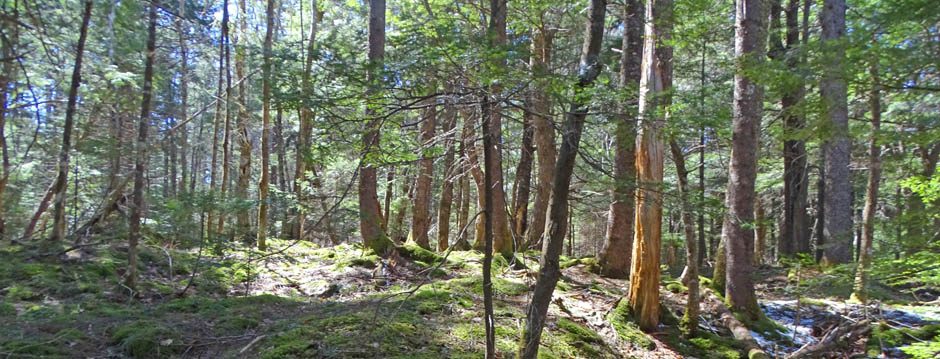| HWA in Nova Scotia Subpages – Eastern Hemlock Notes – About “In the Quiet & the Dark” – Comprehensive Info – The Adelgid – Pesticide Treatment – Biological Control (THIS PAGE) – Silviculture – Post HWA infestation Impacts |
– N.S. pilot project pits tiny beetles against invasive insect killing Hemlock trees
By Megan King & Rebecca Lau Global News, Nov 1, 2023
“…Experts believe they may have a solution: a small tiny bug called the Laricobius beetle.The beetle is native to Canada’s west coast, and the Canadian Forest Service is now working to introduce five beetles into a single bag alongside the Hemlock woolly adelgid to see how they fare through a Nova Scotian winter.”
COMMENT (dp) “Experts believe they may have a solution” is way overly optimistic and I think, misleading to he public; at minimum, a second bio-control is likely to be required and as yet, we have no overall success stories.
Biological control of hemlock woolly adelgid in North America: History, status, and outlook
Mayfield et al., 2023, Biological Control Volume 185, October 2023
From the conclusion (paragraphing inserted):
“…In the three decades since initial exploration for natural enemies began, the biological control program for HWA has both grown and evolved. Sustained public interest in the value of eastern and Carolina hemlock, committed support from government agencies, and a strong collaborative network of managers, scientists, and other stakeholders, has made the program productive.
“Initial focus on coccinellid predators (Sa. tsugae and Scymnus spp.) from China and Japan, which have not performed as hoped, has shifted to derondontid predators (Laricobius spp.) from the Pacific Northwest and Japan. The latter have established widely, show clear impacts on key portions of the adelgid life cycle, and are spreading naturally on the landscape.
“If lineages of the silver fly predators (Leucotaraxis spp.) from the Pacific Northwest can establish and effectively prey on the phases of the adelgid life cycle that are currently unaddressed by Laricobius, the HWA biological control program may well reach its goal of population regulation in the invaded range.
“If they cannot, there are few viable biocontrol options remaining. One option would be to renew work on Scymnus camptodromus by starting a new colony in quarantine and completing additional host range testing and genetic evaluation requested by USDA APHIS.
“Another option would be to explore for other silver fly species that feed on HWA in regions other than western North America.
“Results of research, release, and monitoring efforts on Leucotaraxis spp. in the next five to ten years are likely to reveal much about the ultimate direction and outcome of the biological control program.
“Success of the program is likely to be enhanced through integration with other management tactics, consideration of variable environmental conditions across regions, and recognition of an ever-changing climate.”
Evidence, hints of successful control
– New Jersey: ”
The Hemlock Woolly Adelgid is a small sap-sucking insect, originally from Asia, which is killing hemlock trees throughout the state. The Department is raising and releasing Laricobius nigrinus, the Derodontidae beetle, that feeds on hemlock woolly adelgid. Some hemlock stands are slowly rebounding, indicating the beetles released in the past might be impacting the adelgid problem.”
Shenandoah National Park (Virginia, U.S.A.)
“In 2018, after a decade of waiting and watching studies conducted by the U.S. Department of Agriculture: Animal and Plant Health Inspection Service (APHIS) and other national parks, Shenandoah decided to introduce predatory laricobius osakensis beetles to HWA populations on threatened hemlocks…Since that first release, Shenandoah staff continued to release 500 laricobius beetles every year at new sites. In 2022, they were able to release more than 1,000 beetles in threatened areas across the Park…The beetles are getting established, and they are spreading,” Dale told the group. “We are finding beetles where we’d released in prior years, and we’re finding them at some distance away.” Studies show that the laricobius beetles are causing significant reductions in one generation of HWAs, and the Park plans to continue protecting hemlocks through this program.”
A place to watch (re: climate more similar to NS): Acadia National Park (Maine) : “While NPS has not yet released biological controls or conducted chemical treatments of HWA, neighboring parks and landowners are already responding. In October 2022, the Land and Garden Preserve released Laricobius osakensis predator beetles along Jordan Stream in an area bordering Acadia National Park. Maine Forest Service has recommended that the adjoining area of the park would also be a good candidate for an additional biocontrol release.
